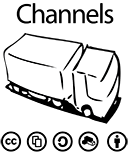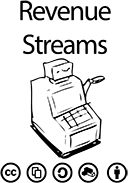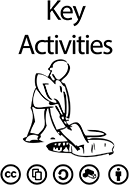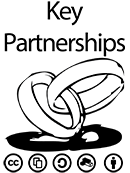Here's how the business model canvas looks like:

Each of the 9 building blocks will be explained to get a further better understanding.
Costumer Segments

Customer segments are the group of people that you want to sell your product to. These group of people are the business focus/target audience. These customers are the people the business plans on making a profit from. Usually the needs of these customers are looked into carefully to see what they want and desire more so that it would match the product a business wants to sell to them.
Value Propositions

Value propositions are the things that makes the company valuable to their customers. This is usually something that draws the customers' attention towards your company.It either meets their needs or don't. Not only that, values can meet the customers' needs by either being quantitative or quantitative.
Channels

Channels are the type of communication between the company and it's customers. Channels are the type of communication that would help bring out the product the a company is selling to for their customers. Finding the right channel is the best way to reach the target customer.
Customer Relationships

Customer relationships are the type of relationship that a company wants to share or have with their customers and what the company promises for their customers. These relationships are what keeps the customers wanting to be around the company.
Revenue Streams

Revenue streams are the decisions that has to be made regarding how much the customers should spend. This is where a a decision is made in order to decide how much customers should pay or are willing to pay. There are many different ways where a company can decide what type of transaction that should be involved between them and the customers.
Key Resources

Key resources are the different resources that was used in order to create the business model of a company. Key resources/activities looks more into the costs it took to make the business model and the total costs of all the resources used to help make the business model. Resources not only includes money, but also other resources such as human, physical, or mental resources.
Key Activities

Key Activities are the type of actions that a company must do in order to make sure that their business model actually works and becomes a success. Usually the key activities must match what the business model try to aim for.
Key Partnerships

Key relationships are the people or partners of a company that helps promote and make the business model work. By creating partnership with others such as a network or another business, it can help create an alliance in which full support will be given. This can become useful in a way where if a company doesn't have access to a certain type of resource, one of their partners who has access can provide it.
Cost Structure

Cost Structures are the overall total costs to plan out and take part in making the business model. All of the costs are added up through the different structures within the business model. The cost structure looks into how much was spent in order to make the business model work.
Here's a quick video that sums and explain what the Business Model is:
No comments:
Post a Comment